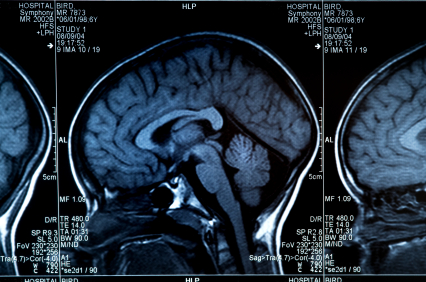MRI scans show brain’s response to actions of others
August 12, 2010
 Affter studying the gray matter of 38 people in a Stanford experiment, psychologists concluded it is the perceived intentions — not the actions — of others that lead us to cherish the charitable and spurn the selfish.
Affter studying the gray matter of 38 people in a Stanford experiment, psychologists concluded it is the perceived intentions — not the actions — of others that lead us to cherish the charitable and spurn the selfish.
The finding comes from the work of Jeff Cooper, who spent his time as a Stanford doctoral candidate studying a part of the brain called the ventromedial prefrontal cortex. Scientists already knew the region is stimulated by personal rewards, but Cooper wanted to see if it also reacts to the actions of others.
He found that it does. And his science boils down to this: When we believe a person is doing something nice for someone else, we take it personally. Our brains register the observation of a good deed as a personal reward.
That’s important information, Cooper said, because “our questions about someone’s intentions determine how we react to outcomes.”
Cooper – who is now a researcher in Trinity College, Dublin’s Institute for Neuroscience – had two groups of participants at Stanford watch people play a financial game. The players were given a bit of money and told to pitch in as much as they want to a common pot, which Cooper and his colleagues doubled. At the end of the game, the money was evenly split among the players.
The only difference between the groups of observers involved how the actions of the players were described. One set of subjects was told the players were engaged in a “stock market game,” where their decisions could result in personal loss or gain. The other subjects were told they were watching a “public goods game,” where the players could help everyone make more money.
While the activities and strategies of the players were consistent when both groups of observers watched them, the test subjects had quite different feelings about them.
Tracking their brain reactions using specialized MRI scans, Cooper and his fellow researchers could tell that watching people play the “stock market” game didn’t incite much activity in the ventromedial prefrontal cortex.
But when it came to watching the players in the so-called “public goods” game, activity in that brain region fired up.
Those who gave generously to the common pot were met with brain signals showing positive emotions, suggesting the observers really liked those players. And players who withheld contributions were regarded with disdain.
“The test demonstrates that what people do doesn’t really matter all the time,” said Brian Knutson, an associate professor of psychology and neuroscience who co-authored Cooper’s paper. “What we think others are intending is what really matters. Essentially, even though people saw the exact same game, framing the game changed the test subjects’ neural reactions to the players.”
Understanding how and why people react to others’ giving and taking can help politicians persuade voters on tricky issues like welfare, taxes and education. It can help jurors decide disputes. And it can explain why people get so upset when Wall Street bankers get huge bonuses even as the stock market crumbles.
More info:: Stanford University news